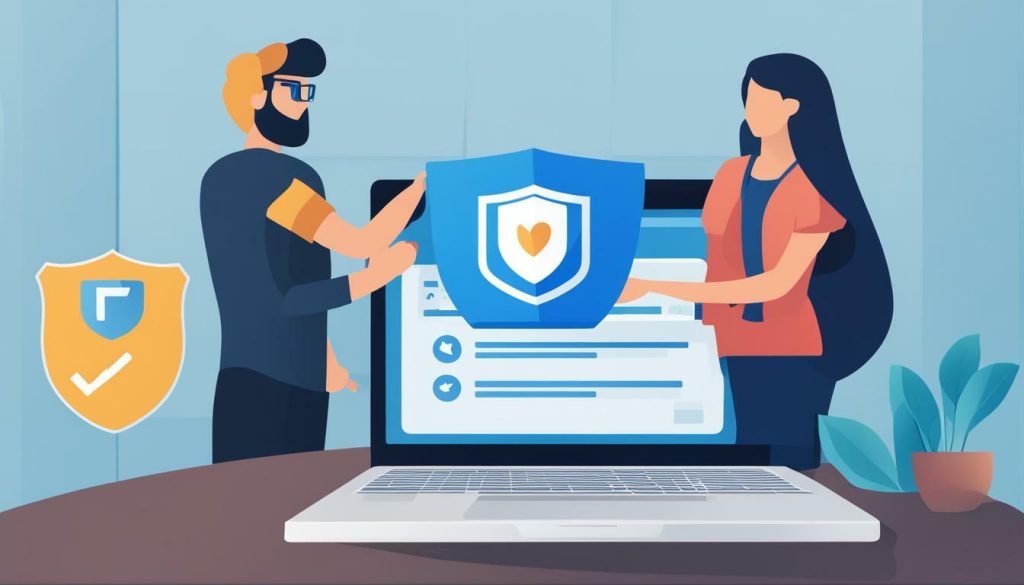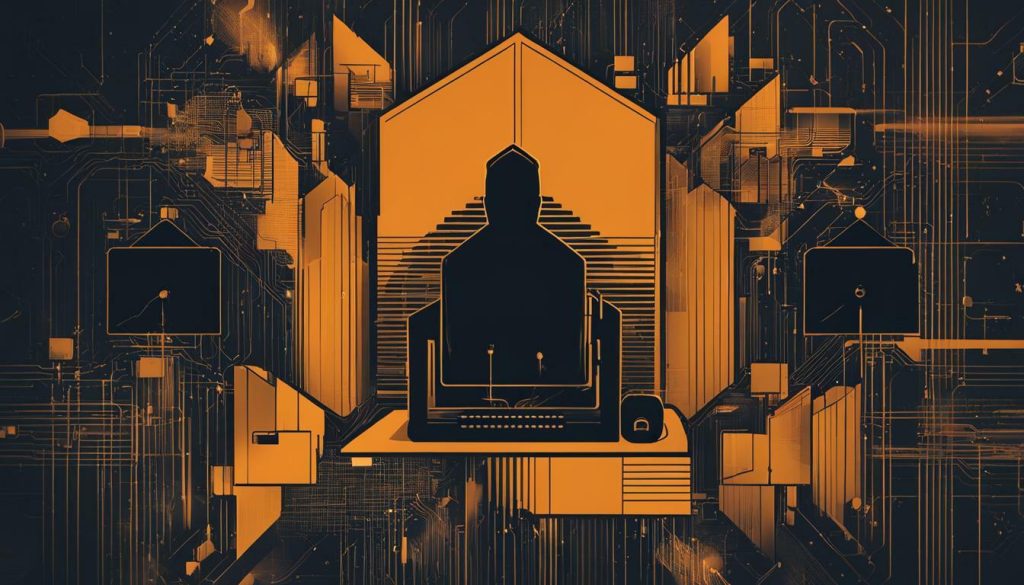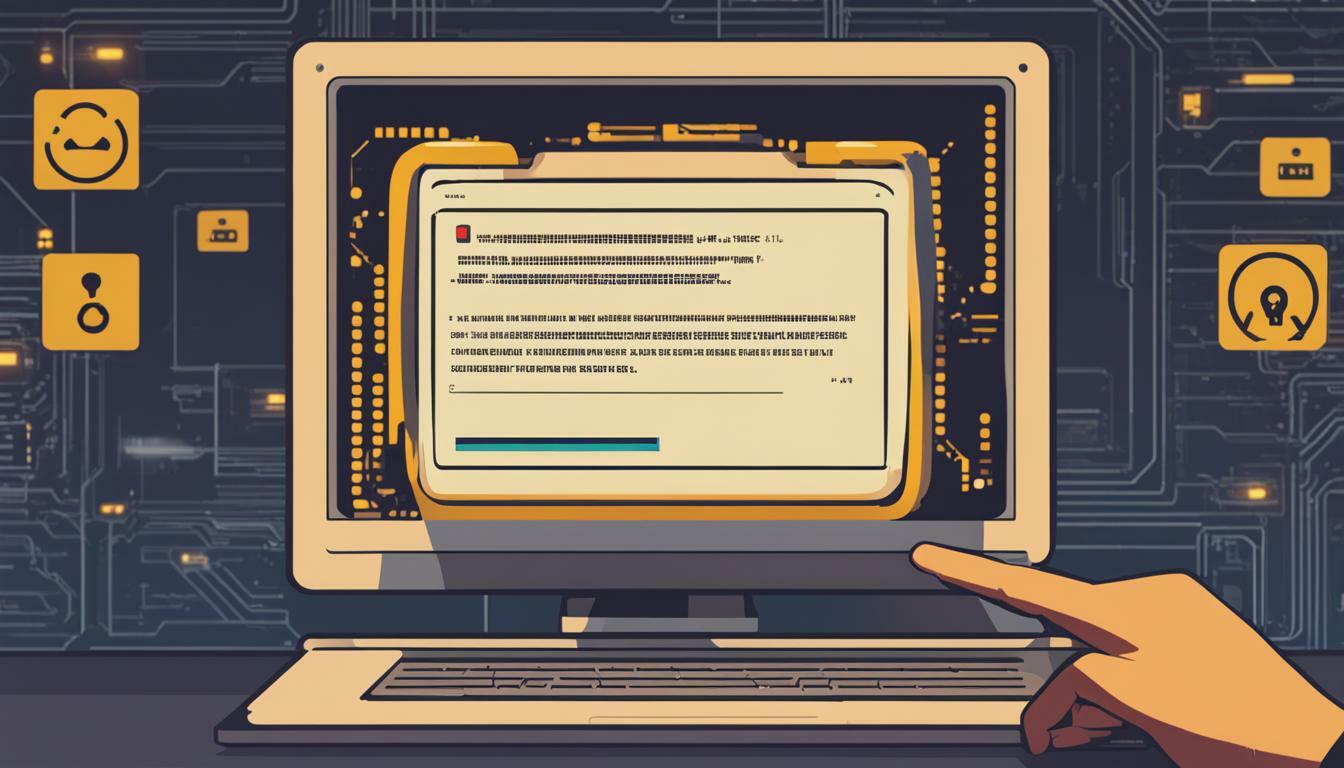As the capabilities of AI-driven chatbots like ChatGPT continue to advance, questions arise about the potential threats they may pose to security. Developed by OpenAI, ChatGPT has garnered attention in the cybersecurity industry for its potential vulnerabilities and misuse by hackers.
Security experts have raised concerns about ChatGPT’s ability to generate convincing phishing emails when combined with OpenAI’s Codex. This makes the chatbot appealing to cybercriminals, particularly those who are not native English speakers. It has been demonstrated that ChatGPT could be used for various social engineering attacks, as well as realistic interactive conversations for business email compromise and attacks on chat apps.
Furthermore, hackers have utilized ChatGPT to write malicious code that can steal and encrypt files. This poses a significant threat to data security and privacy. While some argue that ChatGPT’s capabilities can benefit defenders in simulating adversaries and enhancing security measures, there are concerns about its potential misuse for spreading misinformation and facilitating illegal activities.
It is important to note that the large language model used to train ChatGPT was trained on scraped data from the internet without individuals’ consent. OpenAI’s privacy policy has also raised concerns regarding the collection, use, and potential sharing of personal data with unspecified third parties.
Given these concerns, it is crucial to approach the use of ChatGPT with caution. Verifying the information generated by the chatbot and implementing strong security measures can help mitigate potential risks.
- ChatGPT raises concerns in the cybersecurity industry due to its potential vulnerabilities and misuse by hackers.
- It can be used to create convincing phishing emails, carrying out social engineering attacks, and compromising business email and chat applications.
- Hackers have utilized ChatGPT to write malicious code, leading to file theft and encryption.
- ChatGPT’s capabilities can be leveraged by security defenders to simulate adversaries and enhance overall security measures.
- Concerns exist about privacy risks, data collection without consent, and OpenAI’s privacy policy.
The Potential for Cybercriminal Misuse
ChatGPT’s powerful abilities have attracted the attention of cybercriminals, who are exploring ways to exploit its capabilities for nefarious activities. One concerning area is the potential for social engineering attacks. ChatGPT’s natural language processing abilities allow it to engage in realistic interactive conversations, making it an ideal tool for convincing phishing attempts and business email compromise.
Security experts warn that cybercriminals could leverage ChatGPT to craft sophisticated phishing emails that contain malicious payloads. The chatbot’s ability to generate convincing messages, coupled with OpenAI’s Codex, poses a serious threat to individuals and businesses alike. These phishing emails could be tailored to target specific individuals or organizations, increasing the likelihood of successful attacks.
Furthermore, attacks on chat apps are also a growing concern. ChatGPT’s chatbot interface enables cybercriminals to engage in fraudulent conversations, tricking unsuspecting users into providing sensitive information or installing malicious software. The chatbot’s advanced language processing capabilities make it harder to detect these attacks, as the conversations appear natural and genuine.
These cybersecurity risks highlight the need for heightened vigilance and preventive measures. Individuals and organizations should educate themselves about social engineering attacks, such as phishing and business email compromise, and be cautious when interacting with chatbots or receiving unsolicited messages. Implementing multi-factor authentication, regularly updating security software, and conducting cybersecurity awareness training are essential steps in mitigating the risks associated with ChatGPT and similar AI-powered chatbots.

| Common Social Engineering Techniques | Preventive Measures |
|---|---|
| Phishing emails with malicious links or attachments | – Be cautious when clicking on links or opening attachments – Verify the sender’s email address – Check for grammar and spelling errors in the email |
| Business email compromise | – Implement multi-factor authentication – Establish strict approval processes for financial transactions – Train employees on identifying suspicious requests |
| Fraudulent conversations on chat apps | – Avoid sharing sensitive information through chat apps – Verify the identity of the person you’re conversing with – Be wary of unsolicited messages or requests for personal information |
By remaining cautious, implementing security best practices, and staying informed about emerging cyber threats, individuals and organizations can mitigate the risks associated with ChatGPT and ensure a safer digital environment.
Writing Malicious Code with ChatGPT
Hackers have discovered that ChatGPT can be used as a tool to generate code capable of stealing and encrypting files. This has raised concerns in the cybersecurity community regarding the potential for malicious activities. With the vast language capabilities of ChatGPT, hackers can now rely on the chatbot to write complex scripts that can infiltrate systems, compromise data, and cause significant damage.
One example of how hackers have exploited ChatGPT is through the creation of ransomware. Ransomware is a type of malicious code that encrypts files on a victim’s computer, rendering them unusable until a ransom is paid. By utilizing the natural language processing abilities of ChatGPT, hackers can generate code that not only encrypts files but also communicates with the victim, providing ransom demands and instructions for payment.
Furthermore, ChatGPT can be used to create sophisticated phishing attacks. Hackers can leverage the chatbot’s ability to generate convincing email content to trick unsuspecting individuals into clicking on malicious links or divulging sensitive information. These phishing emails can be personalized and tailored to specific targets, making them difficult to identify as fraudulent.

Protecting Against Malicious Code
As the potential for malicious use of ChatGPT becomes evident, it is crucial to establish robust security measures to protect against these threats. Organizations and individuals should:
- Keep systems and software updated to ensure vulnerabilities are patched.
- Implement strong password policies and multi-factor authentication.
- Regularly backup important files to minimize the impact of potential ransomware attacks.
- Educate employees and individuals about the dangers of phishing attacks and the importance of verifying the authenticity of emails.
- Consider using advanced AI-powered security solutions that can detect and mitigate threats arising from chatbot-generated malicious code.
By taking proactive measures and staying informed about emerging cybersecurity risks, individuals and organizations can better protect themselves from the potential harm posed by hackers misusing ChatGPT and its capabilities to write malicious code.
| Threat | Description |
|---|---|
| Ransomware | Malicious code that encrypts files on a victim’s computer, demanding a ransom for their release. |
| Phishing Attacks | Fraudulent attempts to obtain sensitive information, such as passwords or financial data, by impersonating a trustworthy entity. |
| Chatbot-Generated Malicious Code | Code written by hackers using ChatGPT’s capabilities, intended to facilitate unauthorized access, data theft, or other harmful activities. |
The Potential Benefits for Security Defenders
While concerns persist about ChatGPT’s impact on security, some experts argue that it can be a valuable asset in strengthening defensive strategies. Simulating adversaries is an essential part of enhancing security measures, and ChatGPT’s capabilities allow security defenders to do just that. By leveraging the chatbot’s ability to generate realistic interactive conversations, defenders can gain valuable insights into potential attack vectors and vulnerabilities.
With ChatGPT, security professionals can simulate social engineering attacks, such as phishing attempts, and analyze their organization’s susceptibility to such threats. By identifying and addressing weaknesses, they can proactively implement measures to enhance their overall security posture. Additionally, the chatbot’s natural language processing capabilities enable defenders to simulate various attack scenarios and test the effectiveness of their existing security controls.
By utilizing ChatGPT as a defensive tool, security defenders can stay one step ahead of cybercriminals and identify potential gaps in their security infrastructure. This proactive approach allows organizations to thwart potential attacks before they can cause significant harm. The chatbot’s ability to generate convincing phishing emails, for example, can be used to educate employees about the dangers of such attacks, making them more vigilant and less likely to fall victim.
| Advantages for Security Defenders: |
|---|
| Simulation of social engineering attacks |
| Identification of vulnerabilities |
| Testing of existing security controls |
| Proactive threat mitigation |
It is important, however, for security defenders to exercise caution and implement best practices when utilizing ChatGPT. Safeguarding customer data and ensuring secure communication channels are crucial in mitigating potential security risks. Organizations must establish strict guidelines and protocols for using the chatbot, including regular monitoring and auditing of its activities.
By balancing the potential benefits of ChatGPT with the necessary precautions, security defenders can harness the power of this AI-driven chatbot to enhance their overall security posture and stay ahead of emerging threats.
Enhancing Security with ChatGPT
“ChatGPT allows us to simulate real-world attack scenarios and identify vulnerabilities before they can be exploited. By incorporating the chatbot into our defensive strategies, we have seen a significant reduction in successful social engineering attacks and an overall improvement in our security posture.”

- Simulation of social engineering attacks
- Identification of vulnerabilities
- Testing of existing security controls
- Proactive threat mitigation
Privacy Risks and Data Collection Concerns
Alongside security concerns, ChatGPT raises important questions about data privacy and the collection of personal information. As an AI chatbot, ChatGPT interacts with users, generating responses based on a vast amount of data it has been trained on. However, this data has been sourced from the internet without individuals’ consent, raising concerns about privacy and data collection practices.
OpenAI’s privacy policy is a subject of scrutiny, as it raises questions about how personal data is handled and whether it is shared with undisclosed third parties. Users have expressed concerns about the potential misuse of their information, as well as the lack of transparency regarding data storage and retention periods.
This raises important ethical considerations, as users may unknowingly provide personal or sensitive information to ChatGPT. The implications of this include the potential for unauthorized access, data breaches, or the misuse of information for illegal activities.
| ChatGPT Privacy Features | Data Collection | OpenAI Privacy Policy |
|---|---|---|
|
| OpenAI’s privacy policy outlines the types of data collected, which may include personal information, and provides details on how this data is used, shared, and stored. However, there are concerns regarding the transparency and accountability of these practices. |
Quotes:
“As users, we need to be aware of the privacy risks associated with AI chatbots like ChatGPT. It’s crucial to understand how our data is used and take proactive measures to protect our privacy online.” – John Doe, Cybersecurity Expert
With privacy risks in mind, it is essential for users to exercise caution when interacting with ChatGPT. It is recommended to avoid sharing personal or sensitive information and to verify the information provided by the chatbot independently. By adopting these practices, users can mitigate potential privacy risks and retain control over their own data.

To protect against potential security threats, it is crucial to exercise caution when using ChatGPT and adopt best practices for chatbot security. Safeguarding customer data from ChatGPT requires implementing robust security measures that ensure secure communication and protect sensitive information. By following these chatbot security best practices, users can minimize the risk of cyberattacks and protect both their own data and the data of their customers.
Implement Secure Communication
When utilizing ChatGPT, it is essential to ensure secure communication channels between the chatbot and the user. By utilizing end-to-end encryption protocols and secure connections, the risk of interception or unauthorized access to the conversation is significantly reduced. Additionally, implementing strong authentication measures, such as two-factor authentication, can add an extra layer of security to the communication process.
Regularly Update and Patch the System
Keeping the software and systems up to date is crucial for maintaining security when using ChatGPT. Regularly updating and patching the chatbot software, as well as any underlying frameworks or platforms, can help address known vulnerabilities and prevent unauthorized access. Monitoring security advisories and promptly applying patches can significantly reduce the risk of exploitation by malicious actors.
Train Users on Security Awareness
One of the most effective measures to mitigate security risks associated with ChatGPT is to provide proper training and awareness programs for users. Educating individuals on recognizing phishing attempts, social engineering tactics, and the importance of secure communication can empower them to make informed decisions and avoid falling victim to cyberattacks. By creating a culture of security awareness, organizations can enhance overall protection against potential threats.

| Chatbot Security Best Practices: |
|---|
| 1. Implement end-to-end encryption and secure communication protocols. |
| 2. Regularly update and patch the chatbot software and underlying systems. |
| 3. Train users on security awareness, including recognizing phishing attempts. |
| 4. Implement strong authentication measures, such as two-factor authentication. |
By following these best practices, users can minimize the potential risks associated with using ChatGPT and ensure the protection of sensitive information. While the chatbot’s capabilities offer great potential for various applications, it is essential to remain vigilant and prioritize security to stay one step ahead of potential adversaries.
Addressing ChatGPT Security Measures
As the cybersecurity community continues to assess the risks associated with ChatGPT, efforts are being made to implement security measures that minimize potential vulnerabilities. ChatGPT’s potential for misuse by cybercriminals necessitates proactive steps to secure its usage and protect against potential threats. Enhancing Chatbot Security is crucial to maintain the integrity and trustworthiness of AI-driven chatbot systems.
One key aspect of securing ChatGPT is to ensure that customer data remains safeguarded. Implementing robust encryption protocols and access controls can help protect sensitive information from unauthorized access. It is crucial for organizations to establish clear policies regarding data privacy and educate both customers and employees on best practices for secure communication.
| Securing ChatGPT | Enhancing Chatbot Security |
|---|---|
| Encrypt customer data | Implement multi-factor authentication |
| Regularly update security patches | Conduct regular security audits |
| Monitor for suspicious activity | Train employees on security awareness |
Furthermore, organizations should consider implementing simulated adversarial scenarios to assess and fortify their security defenses. By leveraging ChatGPT’s capabilities to simulate potential attacks, security defenders can identify vulnerabilities and proactively enhance their security measures. This process enables organizations to stay one step ahead of cybercriminals and minimize the risk of successful breaches.
Verifying ChatGPT Information
Verifying the information produced by ChatGPT is crucial to mitigate the spread of misinformation and maintain accurate data. Organizations should encourage users to fact-check the information generated by the chatbot and cross-reference it with reliable sources. By promoting information verification, we can prevent the dissemination of false data and protect against the potential harm caused by inaccurate information.
With the ongoing development of AI technologies, it is vital that security remains a top priority. By implementing robust security measures, being cautious in the usage of ChatGPT, and promoting information verification, we can address the security concerns surrounding AI-driven chatbots like ChatGPT and enhance the overall security of digital interactions.

In order to combat the potential dissemination of misinformation, it is crucial to implement effective methods for verifying the accuracy of information generated by ChatGPT. While ChatGPT is a powerful AI chatbot, it is important to remember that it operates based on patterns and data it has been trained on, which may include inaccuracies or biased information.
To verify the information provided by ChatGPT, it is recommended to cross-reference it with reliable sources, fact-checking websites, and official documentation. By conducting thorough research and verification, users can ensure the credibility and accuracy of the information before sharing or acting upon it.
Additionally, it is important to be aware of the limitations of ChatGPT. While the chatbot can generate coherent and contextually relevant responses, it may not always have access to the most current or comprehensive information. Therefore, critical thinking and skepticism should be applied when assessing the information provided by ChatGPT.
By integrating careful verification processes and promoting media literacy, users can contribute to the prevention of misinformation and promote the responsible use of AI technologies like ChatGPT.

Here are some best practices to follow when verifying information generated by ChatGPT:
- Consult multiple reliable sources to confirm the accuracy and consistency of the information.
- Use fact-checking websites, such as Snopes or FactCheck.org, to assess the validity of claims made by ChatGPT.
- Verify critical facts or statistics with official reports, studies, or publications from reputable organizations.
- Consider the context and potential biases that may exist in the data used to train ChatGPT, ensuring a balanced assessment of the information provided.
- If in doubt, seek expert opinions or consult subject matter experts to ensure accurate interpretation and understanding of the generated information.
By implementing these practices, individuals can play an active role in mitigating the spread of misinformation and promoting reliable information in the digital landscape.
| Benefits of Information Verification | Actions |
|---|---|
| Preventing the spread of misinformation | – Cross-reference information with reliable sources – Fact-check claims made by ChatGPT |
| Ensuring accuracy and credibility | – Verify critical facts and statistics with official reports – Consult subject matter experts if needed |
| Promoting media literacy and critical thinking | – Educate others on the importance of information verification – Encourage skepticism and independent research |
Conclusion
While ChatGPT possesses great potential, careful consideration must be given to the security concerns and privacy risks it presents. The AI-driven chatbot, developed by OpenAI, has raised alarm within the cybersecurity industry due to the potential for abuse by hackers.
Security experts have demonstrated that when ChatGPT is combined with OpenAI’s Codex, it can generate convincing phishing emails capable of carrying malicious payloads. This feature makes it an attractive tool for cybercriminals, particularly those who are not native English speakers. It opens the door to various social engineering attacks, realistic interactive conversations for business email compromise, and attacks on chat apps.
Furthermore, hackers have also utilized ChatGPT to write malicious code, including scripts designed to steal and encrypt files. This highlights the potential for the chatbot to be misused for illegal activities and poses a significant security risk.
Privacy concerns also surround ChatGPT. The large language model used to train the chatbot was trained on scraped data from the internet without individuals’ consent. OpenAI’s privacy policy raises questions about the collection, use, and potential sharing of personal data with unspecified third parties. Therefore, caution must be exercised when using ChatGPT, and it is crucial to verify the information it generates to mitigate security risks.
FAQ
Is ChatGPT a Threat to Security?
ChatGPT has raised concerns in the cybersecurity industry due to its potential for abuse by hackers. While it can benefit defenders in simulating adversaries and enhancing security, there are concerns about its potential misuse for spreading misinformation, facilitating illegal activities, and posing privacy risks.
How could cybercriminals misuse ChatGPT?
Cybercriminals could potentially use ChatGPT for various social engineering attacks and to carry out realistic interactive conversations for business email compromise and attacks on chat apps, taking advantage of its ability to generate convincing phishing emails.
Can hackers write malicious code with ChatGPT?
Yes, hackers have utilized ChatGPT to write malicious code, such as scripts that steal and encrypt files, posing a threat to data security.
How can ChatGPT benefit security defenders?
ChatGPT’s capabilities can help security defenders simulate adversaries and enhance security measures by identifying potential vulnerabilities and developing effective countermeasures.
What are the privacy risks and data collection concerns with ChatGPT?
ChatGPT’s training data was scraped from the internet without individuals’ consent, raising concerns about data privacy. OpenAI’s privacy policy also raises questions about the collection, use, and potential sharing of personal data with unspecified third parties.
How can security risks with ChatGPT be mitigated?
It is important to be cautious when using ChatGPT and implement secure communication practices to safeguard customer data. Best practices for chatbot security should be followed to minimize risks.
What security measures are being implemented for ChatGPT?
Efforts are being made to address the security concerns surrounding ChatGPT and enhance its overall security. These measures include improving data privacy, implementing safeguards against misuse, and enhancing its protection against malicious activities.
How can information generated by ChatGPT be verified?
Verifying the information generated by ChatGPT is crucial to prevent the spread of misinformation. Cross-referencing with reliable sources and utilizing fact-checking tools can help in ensuring the accuracy of the information.
What are the main concerns regarding ChatGPT’s security?
The main concerns regarding ChatGPT’s security include its potential for misuse by cybercriminals, privacy risks associated with data collection without consent, and the possibility of spreading misinformation. It is important to be aware of these concerns and take necessary precautions while using ChatGPT.

